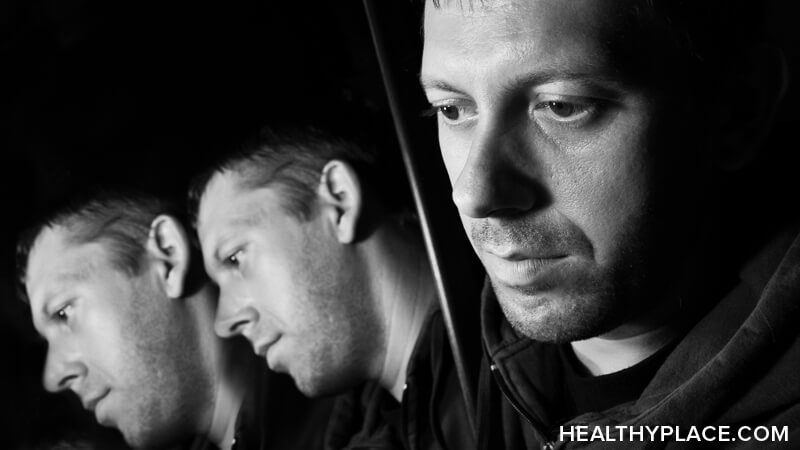What are the Subtypes of Schizophrenia?
 Before 2013, schizophrenia was officially classified and diagnosed as one of five subtypes. Once someone met the criteria for schizophrenia, she was further diagnosed with a particular type. When the American Psychiatric Association published its Diagnostic and Statistical Manual of Mental Disorders, Fifth Edition (DSM-5), the authority on mental illness, it eliminated the subtypes of schizophrenia. While the subtypes are no longer used as part of the diagnosis of schizophrenia, the traits still exist. These characteristics of schizophrenia didn’t disappear.
Before 2013, schizophrenia was officially classified and diagnosed as one of five subtypes. Once someone met the criteria for schizophrenia, she was further diagnosed with a particular type. When the American Psychiatric Association published its Diagnostic and Statistical Manual of Mental Disorders, Fifth Edition (DSM-5), the authority on mental illness, it eliminated the subtypes of schizophrenia. While the subtypes are no longer used as part of the diagnosis of schizophrenia, the traits still exist. These characteristics of schizophrenia didn’t disappear.
The Five (Former) Subtypes of Schizophrenia
In the past, someone was diagnosed with schizophrenia if his symptoms met the minimum criteria for the disorder. Next, based on his specific symptoms, behaviors, appearance, and other traits, he would be diagnosed with a subtype. His diagnosis might, for example, be “schizophrenia, paranoid type.”
Schizophrenia can be confusing, even to professionals, and the idea of assigning people to specific diagnostic subtypes made the confusion even worse.
Someone’s subtype could change based on her predominant symptoms at any given time, and many times, people could have symptoms that fit into more than one type. On top of that, the classification of schizophrenia into five types raised a legitimate question: How many types of schizophrenia are there?
There is only one type. It’s called schizophrenia, and there is no “type” added. Therefore, the use of subtypes is not part of the DSM-5.
It’s still nice to know what the types of schizophrenia were. They’re characteristics that professionals still use to evaluate when diagnosing and treating this serious mental illness. If you or a loved one is living with schizophrenia, knowing these presentations of schizophrenia will help you understand what is going on.
5 Subtypes of Schizophrenia
The predecessor to the DSM-5, the DSM-IV-TR, instructed that one of the five subtypes be included with a diagnosis of schizophrenia:
- Paranoid
- Disorganized
- Catatonic
- Residual
- Undifferentiated
While there are no types of schizophrenia in the DSM-5, “catatonia” can be used as a specifier. This simply means that it’s noted that the person’s symptoms are catatonic in nature, but that’s simply a description. She does not have “schizophrenia, catatonic type.”
Currently, professionals view schizophrenia as one disorder. There are unique symptoms of schizophrenia that can be grouped together, but there are not five different types of this mental illness. Let’s take a look at the traits that describe a person’s unique experience with schizophrenia.
Characteristics of the Different Traits of Schizophrenia
When someone has schizophrenia, he will exhibit any of the following traits. The traits aren’t stable but can change over time.
Paranoid
- Hallucinations, especially auditory—voices talking to the person about others and about him
- Delusions—unrealistic beliefs that people are out to get her, that she’s superior, or other themes
- Hallucinations and delusions are often related
- The negative symptoms of schizophrenia aren’t usually present
- Anxiety
- Anger
- Aloofness
- Argumentative behavior
- Overall, the person’s appearance doesn’t indicate schizophrenia (as it does with the disorganized and catatonic traits)
- Often have intimate relationships/marriage/children
Disorganized
- Disorganized speech that is difficult to follow or even understand
- Disorganized, “odd” behavior
- Impaired performance on psychological and cognitive tests
- Disheveled, unkempt appearance
- Often wears inappropriate clothing for the weather
- Minimal hallucinations and delusions; when they occur, they’re not structured and organized as with paranoid traits
- Add excessive hallucinations and delusions, and this is often the way schizophrenia is portrayed in the media (Schizophrenia Movies, Films and Documentaries)
Catatonic
- Very slow motion or even immobility
- Refraining from speaking (selective mutism)
- Holding the body in one position for long periods of time
- Ignoring the presence of others
- Involuntary mimicking of others’ speech (echolalia)
- Bursts of hyperactivity, purposeless movement (echopraxia)
Undifferentiated
- The person meets the criteria for schizophrenia
- He doesn’t exhibit enough traits of each to be predominantly paranoid, disorganized, or catatonic
Residual
- No current experience of hallucinations or delusions (but there has been in the past)
- Presence of negative symptoms
The traits of schizophrenia, formerly conceptualized as subtypes of schizophrenia, help professionals recognize what someone is experiencing and can help in the creation of a treatment plan tailored to each individual. Further, knowing these traits will help others understand what someone with schizophrenia is going through, thus increasing empathy and the ability to offer support.
APA Reference
Peterson, T.
(2021, December 28). What are the Subtypes of Schizophrenia?, HealthyPlace. Retrieved
on 2025, December 12 from https://www.healthyplace.com/thought-disorders/schizophrenia-information/what-are-the-subtypes-of-schizophrenia


